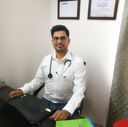Mycobacterium: Treatment, Procedure, Cost and Side Effects
Last Updated: Jan 20, 2025
What is the treatment?
No synonyms.
How is the treatment done?
Mycobacterium are aerobic and non-motile bacteria, they can colonize their hosts without the host showing any adverse symptoms. Various infections are caused by different strains of this bacteria like M. tuberculosis, M. bovis, M. leprae, M. africanum, M. microti.
Different infections follow different treatment plans. These infections are very difficult to treat, as they are resistant to a number of antibiotics like penicillin, two to three antimicrobials have to be taken by the patient for at least twelve months. Additional drugs like Aminoglycosides may also be recommended to the patient.
Consultations with infection disease specialists, surgeons, dermatologists, and pulmonary specialists may be necessary.
Surgical removal of the affected lymph nodes is sometimes important. In very severe cases, skin grafts can be required to repair the surgical wounds.
Research is going on for more effective treatment of these infections to reduce the mortality rate among immunocompromised patients. Sometimes the bacteria remain inactive inside the body of the patient, that is it does not cause infection, but there is always a chance that it may, for that a separate set of drugs are provided to the patient to kill the inactive bacteria.
Who is eligible for the treatment? (When is the treatment done?)
Treatment is done considering the infection that the person is suffering from, since mycobacterium causes a set of infections. Antimicrobials are prescribed, commonly used first line drugs include clarithromycin or azithromycin, rifampin, rifabutin. Aminoglycosides like streptomycin and amikacin may also be used. Amikacin injections may also be administered.
For some cases laproscopic surgery may be important. In very severe cases antibiotics may be required for two years.
Even after the culture reverts to negative, therapy is recommended to be continued for at least one year. The treatment plan may include an intensive phase and a continuation phase.
The intensive phase should include daily oral macrolide (preferably azithromycin) in conjunction with three to twelve weeks of intravenous amikacin or imipenem, tigecycline. The severity of the infection decides the duration of the intensive phase of the treatment.
The continuation phase should include again a daily oral macrolide (like azithromycin) and inhaled amikacin with 2-3 of the following oral antibiotics like minocycline, clofazimine, moxifloxacin etc.
.Monotherapy with macrolide should not be used.
For patients with Leprosy Multidrug therapy (MDT) is recommended which consists of a series of antibiotics. For Mycobacterium avium complex, the patient’s immune system has to be restored, in HIV patients who are not undergoing treatment antiretrovirals should be taken immediately to strengthen their immune sysytem
Treatment should be done only when the test is positive and there are systematic signs of illness.
Herbal remedies are also said to be helpful, Artemisia is said to make TB-causing bacteria Mycobacterium tuberculosis dormant, by making the bacteria dormant it can help in shortening the overall duration of treatment
It has also been reported that vinegar helps in killing mycobacteria as it contains an active ingredient, acetic acid, which can be used as a non-toxic disinfectant against drug-resistant tuberculosis.
Who is not eligible for the treatment?
As the infections are of various types, different treatment plans are applicable for different people. The main factors that are taken into account before the start of treatment is whether the patient is undergoing treatment for some other infectious disease, the age of the patient is also an important decisive factor.
Are there any side effects?
People who are terminally-ill or have a life-threatening condition usually don’t qualify for treatment as the treatment of their other ailments take center stage in their life.
What are the post-treatment guidelines?
The prescribed antibiotics may cause serious side effects like vomiting, severe watery diarrhea, white patches on the tongue, vaginal itching or discharge, allergic reactions like rash, shortness of breath, swelling of lips and tongue, stomach cramps etc.
How long does it take to recover?
maintaining hygiene is essential.
What is the price of the treatment in India?
The prescribed drugs may have to be taken for about 6 months- 2 years after which complete recovery is attained.
Are the results of the treatment permanent?
Since the treatment process is pretty long, a lot of people do not continue the treatment which results in the formation of drug-resistant varieties of bacteria. If treatment is continued and prescribed drugs are taken regularly without any delay the results can be permanent.
Although In certain cases, there is a substantial relapse rate.
What are the alternatives to the treatment?
Since the treatment process is pretty long, a lot of people do not continue the treatment which results in the formation of drug-resistant varieties of bacteria. If treatment is continued and prescribed drugs are taken regularly without any delay the results can be permanent.
Although In certain cases, there is a substantial relapse rate.
References
- Mycobacterial Infections- Medline Plus, Health Topics, NIH, U.S. National Library of Medicine [Internet]. medlineplus.gov 2019 [Cited 16 August 2019]. Available from:
- Nontuberculous Mycobacterial Infections- MSD Manual Professional Version [Internet]. msdmanuals.com 2018 [Cited 16 August 2019]. Available from:
- Mycobacterial Diseases- Longdom Publishing [Internet]. longdom.org 2015 [Cited 16 August 2019]. Available from:
Table of content
15+ Years of Surgical Experience
All Insurances Accepted
EMI Facility Available at 0% Rate
Find General Physician near me
Ask a free question
Get FREE multiple opinions from Doctors

